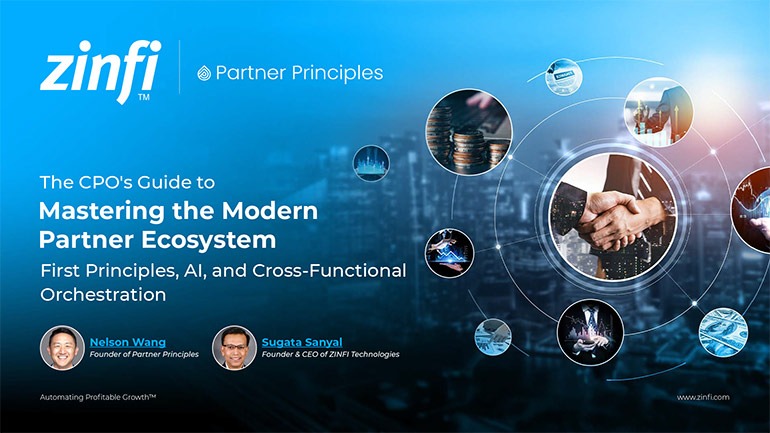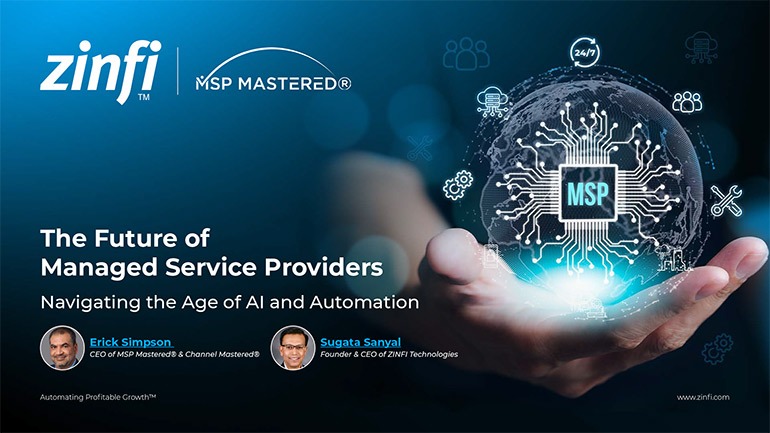Best Practices Articles

What Is Through-Partner Marketing Automation?
Organizations that sell through the channel realize how important it is not only to enable their partners to market and generate demands, but also to deal with the complexities of setting up demand generation campaigns, informing partners and letting them download marketing assets to set up and run campaigns. However, with the advent of Through-Partner Marketing Automation (TPMA) capabilities, companies today can rapidly deploy end-to-end integrated marketing platforms for their partners and drive demand. In this article, we will explore various aspects of Through-Partner Marketing Automation.
Traditionally, partner marketing in the business-to-business (B2B) environment meant running end-user events and telemarketing. In the business-to-consumer (B2C) domain, it meant running activities like advertising and in-store promotions. However, with the rapid evolution of social media over the past five years, and with both consumer and business buyers flocking online to research products, the marketing mix has changed dramatically. This has led to a whole new segment of marketing automation, which is now morphing into a core set of capabilities that comprise Through-Partner Marketing Automation.
Any Through-Partner Marketing Automation platform today needs to have a core set of capabilities around the following activities:
- Setting up campaigns and programs– The primary goal is to set up programs and campaigns with the company’s business and channel objectives. Any Through-Partner Marketing Automation platform should provide a complete online campaign library where a partner can go and download either all individual assets in a click, or run integrated end-to-end campaigns in a few minutes. The ability of a partner marketing manager to set up campaigns in a dynamic way is paramount here.
- Planning demand generation activities– The goal for this set of activities is to identify a group of partners who are capable and willing to run campaigns and programs.
1. Partner profile manager – This feature allows a vendor to upload their partner contact list in a unified central position to keep track of partner activities. A state-of-the-art Through-Partner Marketing Automation platform can not only track what a partner has done, but also enable a vendor to plan campaign activities dynamically online.
2. Lead management– The purpose of a demand generation campaign is to generate qualified leads of prospects who would potentially buy a product or a solution. The rise of digital marketing has enabled marketers to track marketing spend in a very effective way. Today’s Through-Partner Marketing Automation platform needs to have a sophisticated lead management capability. At the heart of this lead management capability is a CRM system.
- Executing marketing tactics– This is where partners fully leverage a Through-Partner Marketing Automation platform to run end-to-end integrated campaigns.
1. Search marketing– Seventy percent (70%) of buyers today search online and pretty much make up their mind what they will buy based on the online research that they carry out. Any Through-Partner Marketing Automation must have search marketing capability for partners to use.
2. Social marketing– Right after search marketing, one of the most important front-end marketing tools for Through-Partner Marketing Automation is social marketing management. A vendor should have the ability to push social marketing content via a partner’s individual account to their respective end-users. This is a critical capability that can drive and scale awareness significantly.
3. Email marketing –While many have declared the death of email marketing (please read our article “Is Email Marketing Dead?“), the reality is email marketing can still be a highly effective tool in pushing out newsletter and other relevant content to end-users via a partner network. Email marketing is also highly effective for running quarterly promotions and programs. This is a must-have capability for any Through-Partner Marketing Automation platform.
4. Microsite marketing– If you are selling a solution, it’s important to explain how the solution works in solving a customer’s pain point. This is where a vendor may want to set up a complete microsite focusing on various aspects of the solution and discuss how the product can address customer needs by using videos, white papers, case studies and other marketing media. Most advanced Through-Partner Marketing Automation platforms today have microsite marketing as a core capability.
5. Event marketing –This has been a staple for most B2B and B2C marketers for ages, but most recently–with the advent of online webinars and on-demand webinars–event marketing has taken on a whole new meaning. A state-of-the-art Through-Partner Marketing Automation platform today will have advanced event marketing capabilities that should not only address roadshows, tradeshows, etc., but also a dynamic set of online events, both live and on-demand.
6. Collateral marketing – Last but not least, partners always want to leave brochures, data sheets, case studies and other collateral with their clients to explain the fit of the solution. This is typically more important in B2B than B2C, but high-end B2C sales (e.g., automotive, home automation, audio-video) tend to rely quite a bit on collateral. A Through-Partner Marketing Automation platform must allow a partner to quickly co-brand and print collateral materials.
- Global deployment capability– For manufacturers selling globally, the Through-Partner Marketing Automation platform must be able to support multiple languages, local currencies, local campaign requirements, data privacy laws and requirements.
- Dynamic analytics– Any Through-Partner Marketing Automation platform must be able to provide dynamic and custom reports that allow users at all levels to track, measure and analyze performance, and to use these metrics to take appropriate actions and increase ROI.
Through-Partner Marketing Automation can play a pivotal role in simplifying marketing workflow by increasing visibility and scalability, but most importantly it can drive partner satisfaction and capabilities to drive profitable growth.
Best Practices Guides
 First Principles Drive Modern Partner Ecosystem Success Best Practices
First Principles Drive Modern Partner Ecosystem Success Best PracticesDownload for FREE
 The Future of Managed Service Providers: Navigating the Age of AI and Automation
The Future of Managed Service Providers: Navigating the Age of AI and AutomationDownload for FREE
 Modernizing Channel Marketing: AI and Ecosystem Enablement Best Practices
Modernizing Channel Marketing: AI and Ecosystem Enablement Best PracticesDownload for FREE
 The Channel’s Shift to Partner-Led With AI Best Practices
The Channel’s Shift to Partner-Led With AI Best PracticesDownload for FREE
 Hyperscalers, ISVs, and AI: Shaping the Future of B2B Software Distribution
Hyperscalers, ISVs, and AI: Shaping the Future of B2B Software DistributionDownload for FREE
 Definitive Guide to a Partner Ecosystem-First Sales Strategy
Definitive Guide to a Partner Ecosystem-First Sales StrategyDownload for FREE
 The Partner-Led Digital and AI Transformation Best Practices
The Partner-Led Digital and AI Transformation Best PracticesDownload for FREE
 Startup Talent Recruitment: Hiring Missionaries, Not Mercenaries
Startup Talent Recruitment: Hiring Missionaries, Not MercenariesDownload for FREE
 The Future of Partner Relationship Management with AI in Partnerships
The Future of Partner Relationship Management with AI in PartnershipsDownload for FREE
 Cybersecurity for the 99%: Strategies from the Frontline
Cybersecurity for the 99%: Strategies from the FrontlineDownload for FREE
 Mastering Partner Relationships: A Strategic Approach to Business Growth
Mastering Partner Relationships: A Strategic Approach to Business GrowthDownload for FREE
 Mastering Partner Relationship Management: Keys to SaaS Channel Success
Mastering Partner Relationship Management: Keys to SaaS Channel SuccessDownload for FREE